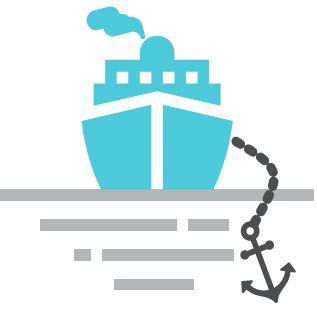Discover everything you need to know about sailboat engine in this essential guide. Learn about marine engines, outboard and inboard engine self-survey criteria, and electrical systems to ensure smooth sailing.
You can spend a surprising amount of time installing, maintaining, and fixing any of the mechanical or electrical systems on a boat. As a boat grows larger and more complex, the time and costs involved can be overwhelming. Keep your mechanical and electrical systems simple, and you will spend more time sailing.
Marine Engines
The major considerations in selecting a marine engine are:
- horsepower,
- installation,
- reliability,
- and safety.
Choices have to be made between outboard and inboard, gasoline and diesel. Your decision will have an impact on your enjoyment of the boat, the purchase and long-term ownership costs, and the amount of time you spend working on the engine.
Selecting engine size involves several compromises. Factors to consider include the amount of room available for the installation, the negative effect of engine weight on Boat Performance Factors Explained: Key Metrics and Analysis Guidesailing performance, the amount of power desired in adverse conditions, and long-term maintenance costs. Engines that are smaller in weight and horsepower can generally be bought for less, be easier and cheaper to maintain, have better fuel economy, and have less impact on weight distribution.
The disadvantage will be performance under power. The underpowered sailboat may not reach hull speed in calm conditions and may barely make way into a heavy sea. With slightly more power, the boat may reach hull speed in calm conditions but may be significantly slowed when punching into a heavy sea. You must decide how much boat speed you expect or need in both calm and heavy weather conditions, bearing in mind that a sailboat under sail is much more comfortable and performs better in heavy weather than a motoring sailboat.
The true sailboat auxiliary engine is designed to power in and out of anchorages or when conditions are so light that significant progress cannot be made under sail alone. One and a half horsepower per one thousand pounds (three horsepower per ton) is a good rule of thumb for the power requirements of a sailboat using an inboard engine. This ratio should enable the boat to move at hull speed through flat water at “cruising throttle”.
Speed will, of course, be affected by how easily the boat is driven (hull form, displacement, and clean bottom), the condition of the engine and shaft bearings, the efficiency of the gear box or drive system, and the type of propeller. A larger horsepower-to-weight ratio is more appropriate for outboard powered sailboats since the higher RPM outboard is less effective in propelling the boat and should be throttled down to avoid prematurely wearing out the engine.
Outboards are usually used on small sailing dinghies, day sailers, pocket cruisers, and small racing sailboats when inboards are impractical because of weight, size, or cost. As a sailboat approaches twenty-six to twenty-eight feet, the outboard becomes increasingly ineffective except in completely calm conditions.
The major advantages of the outboard motor are low initial cost, portability, and the wide availability of mechanics and parts for the major brands. Disadvantages include a generally shorter life span due to running at higher RPMs, lighter construction, more exposure to the weather and sea, likely problems with galvanic corrosion, and the risk of theft.
Larger outboard engines also have high fuel consumption and, with only a few small outboard fuel tanks, a limited cruising range. Unless the outboard is installed in a motor well, its performance in reverse and in turns is very poor, although turning both the motor and the tiller can compensate for this problem. When the boat pitches and the prop comes out of the water in rough seas, the resulting racing of the motor can seriously damage the engine. Transom-mounted motors can also be flooded and killed by a following sea. In addition, they are quite noisy.
Until the mid-1970’s, gasoline inboard engines were generally installed on sailboats. They were substantially cheaper than diesels (by one-third to one-half) and were available in a variety of sizes in both truck and car engine blocks. The Atomic Four, designed in 1949 as a marine engine, is probably the most common gas engine found in sailboats. Because of the current buyer interest in diesels, used sailboats with gas engines may be discounted in price. Parts for inboard gas engines are relatively easy to find. The same is true of mechanics. If you can work on your car engine, you will find it an easy transition to your boat’s engine.
Another advantage of gasoline engines over diesels is that dirt and water in the fuel have less impact on short-term operation. Gas engines run smoother and quieter, too, since they generally have four or more cylinders and operate at high RPMs. They have no strong fuel or exhaust smell, and fewer oil changes are required. Gas engines are easy to hand crank or start on a low battery because of their low compression ratios.
Inboard gas engines do have disadvantages, however. Gasoline is highly volatile with a low flash point. Since gas fumes are heavier than air and can sink into the lowest spot in the boat, the bilge and engine compartments must always be well vented. Any gasoline leak should be treated as a serious emergency. Gas engines have higher fuel consumption than diesels because gasoline has less BTUs per gallon and gasoline engines are less efficient in extracting the BTUs available.
The ignition system of a gas engine is vulnerable to moisture and corrosion, and the motor will not run unless all parts of the ignition system (spark plugs, spark plug wires, points, condenser, coil, rotor, and distributor cap) and charging system (battery, battery cables, alternator, and regulator) are in working order. Auto and truck marinized engine blocks are generally not as heavily constructed as diesel engine blocks. Coupled with the higher RPMs of a gas engine, a shorter life span can be expected.
Inboard marine diesels range upward from 7 horsepower and 141 pounds. In the past, many marine diesels were marinized versions of utility or industrial diesels, although some were specifically designed as marine engines. Now that diesels for automobiles and light trucks have been developed, a much wider range of engines is available. This new generation of diesels is lighter, smaller, more efficient, and smoother running. Many are high RPM engines, in contrast to the low RPM, high torque diesels designed specifically for marine use. Parts and mechanics for the new diesels are becoming widely available.
There are several diesel disadvantages. The initial cost of the engine is higher, though the marinized versions of the new diesels are getting closer and closer to the cost of gas engines. Good diesel mechanics may still be hard to find, although this is changing with the “dieselization” of more cars and trucks. Parts for diesel engines with small or nonexistent service organizations may be hard to locate.
Diesel engines are extremely sensitive to dirt, air and water in the fuel. This can cause short-term erratic operation (including stopping at the worst possible times) or major damage to injector pumps, injector nozzles, or pistons. In addition, bacteria that can clog the fuel system thrive in diesel fuel tanks. Over approximately 15 horsepower, diesels are almost impossible to hand crank (and they are difficult under 15 horsepower).
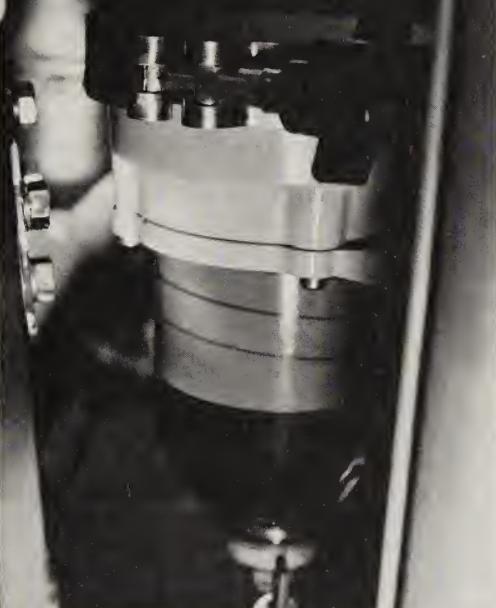
Thus, they are dependent on an electrical starting system, with all its possibilities for water-induced shorts, corrosion, and failure. In addition, most large diesels use glo plugs with their attendant high current draw. Diesels can also be difficult to start in the winter and require special treatment of the fuel in cold weather. They require more attention to oil changes because of high compression ratios and an inability to purge diesel fuel acids from the oil. Finally, high compression ratios and fewer cylinders make them run more noisily and roughly than gasoline inboards.
For new or used inboard engines and used outboards, have a qualified mechanic survey engine installation, as well as the engine’s general condition. Since engine installations on the average sailboat are often inadequate, this process can save you considerable grief and money if you decide to purchase. Before you hire the mechanic, check out the installation yourself to determine whether it meets your minimum requirements. The following criteria should assist you in your self-survey of outboard and inboard engine installations.
Outboard Engine Self-Survey Criteria
If transom-mounted, the bracket should swing up to keep the motor clear of the water when sailing. It should swing down when motoring to keep the exhaust, cooling water intake, and propeller well underwater. The deeper the propeller, the less chance it will come out of the water as the boat pitches in a seaway. As the motor head is also lowered, however, there is an increased risk of flooding the motor with seawater from a following wave.
The motor mount should be through- bolted with backing plates. The motor should be tightly secured to the bracket and equipped with a safety chain or line. The mounting should be backed up with a lock to keep the clamps from vibrating loose and to reduce the risk of theft. Motors mounted in wells forward of the rudder are more efficient in turning and in reverse. They are also less apt to come out of the water and race when the boat is pitching in a heavy sea. The motor well must be adequately ventilated and the exhaust routed outside the well.
Read also: How to Choose the Perfect Sailboat: Tips on Selection, Ownership, and Alternatives
If the boat doesn’t have built-in fuel tanks, provision should be made for an overboard vented locker where the outboard tanks can be secured. On larger sailboats, top-mounted or remote controls are almost a necessity for operating the motor. Built-in alternators are convenient, but they are subject to rapid deterioration because of their location, and they rarely satisfy anything except the lightest electrical loads.
On any used motor, particularly one operated in salt water, check for a damaged prop, water in the transmission oil, and corrosion of the underwater portion of the motor. Motors immersed in salt water for extended periods must have a zinc anode to protect against galvanic corrosion.
Inboard Engine Self-Survey Criteria
Criteria in bold type are essential for gasoline engine installations to avoid an explosion.
All fittings and lines in the fuel system should be double-hose clamped, if possible, leak free, and protected from chafe. Avoid long lengths of unsupported fuel lines. Fuel lines should be flexible hose, not tubing.
All parts of the fuel or ignition system should be accessible for inspection and repair, particularly:
- fuel shutoffs,
- fuel pumps,
- fuel filters,
- carburetors,
- spark arresters,
- bleed screws,
- injectors,
- spark plugs,
- ignition wires,
- distributor caps and rotors,
- coils,
- condensers,
- points and timing marks.
Fuel cutoffs must be available at the fuel tank and at the engine. The fuel fill pipe should be secured to a waterproof deck plate/cap, and the pipe should have at least a 1/4 inch inner diameter. The deck plate must be located so that escaping vapors are vented overboard. The fill plate, the fuel tank, and the engine must be electrically bonded for static electricity and lightning. The fuel tank must be tightly secured for the worst possible movement of the boat, and all large tanks must be baffled and/or divided into several smaller tanks. All fittings – including return fuel lines and vents – must be from the top of the tank. The vent tube should be an inner diameter of 9/16 inch and must be vented overboard in a high loop to a vent that will not be submerged when sailing. Gasoline engines must have a Coast Guard approved spark arrester on each carburetor.
The engine compartment must be adequately ventilated, both naturally and by a blower. At least one air intake duct must be installed below the level of the carburetor air intake. The power blower’s exhaust intake must be below the level of the carburetor air intake at the lowest point in the bilge that is free of water. The blower itself must be mounted well above any possible splashing bilge water and must exhaust overboard.
The engine should be well secured on a sturdy engine bed of wood, steel, or aluminum. On a wooden boat, the bed should straddle four or more frames and floors. The fastening of the bed to the boat and the engine to the bed should be checked for adequacy. Flexible engine mounts are desirable on diesels to reduce vibration and noise. Adjustments for engine shaft alignment should be accessible at each engine mount or pad.
There should be a drip or oil pan under the engine. The engine should be painted and look clean and presentable, with little rust. Check for water leaks (indicated by salt deposits, if the engine has been run in salt water) and for fuel and oil leaks.
Pulley belts should not be cracked, ragged, or worn. Check for rubber dust, a sign that the pulleys are out of alignment. Check belt deflection. Belts should not be overly tight or slack. A half inch of deflection is a standard measure for correct tension. All belts should be easily accessible for changing.
The engine compartment should be insulated for heat and noise. Lead foam is the standard material for this type of insulation. Access should be good for checking and changing the engine and transmission oil, and the oil filter. Oil changes are much easier with a built-in oil sump and/or pump. An engine oil analysis by a lab may be a useful indicator of the internal condition of a used engine.
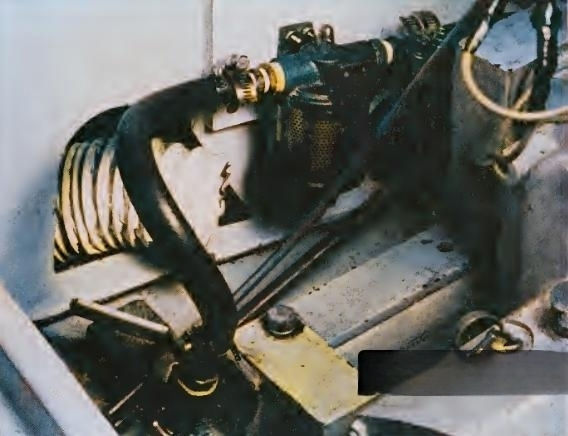
The engine/transmission coupling should be accessible for inspection and alignment. A flexible coupling is preferable on rough running diesels (most one- to three-cylinder ones) and on long propeller shafts to reduce stresses on the engine, transmission, and shaft bearings.
The stuffing box (where the propeller shaft passes through the hull) should be accessible for inspection and to tighten the packing nuts. The hose covering the stuffing box and the shaft tube should be in good condition and double-clamped.
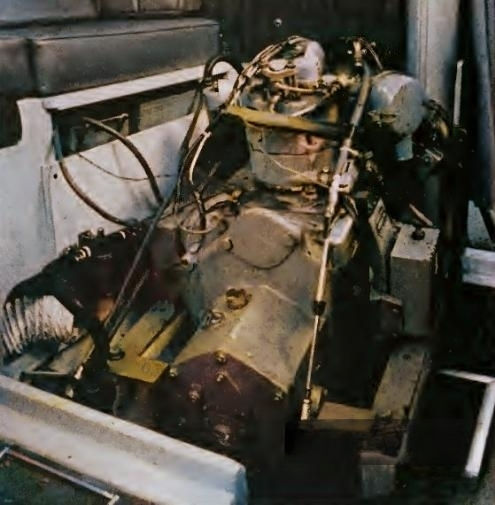
The cutlass bearing (through which the shaft passes through the hull after exiting the stuffing box) should be checked for wear.
The propeller should be checked for nicks and corrosion. Folding, feathering, and variable pitch props should be in good working order. There should be some means of locking the propeller shaft to keep the propeller from freewheeling when under sail. Check the condition of the zinc on the propeller shaft or strut. If it is providing adequate protection from electrolysis and galvanic corrosion, it should be partly eaten away between normal haul-outs.
A minimum set of engine gauges should include tachometer, temperature, ampere-charging rate, and oil pressure. Alarms for the cooling water temperature and the oil pressure are valuable additions.
Electrical Systems
Water, particularly salt water, and electrical systems don’t get along well. Some sailors have taken drastic measures to avoid problems, such as banning electricity from their boats or deep-sixing the offending gadgets. With a good installation and consistent maintenance, however, you can take advantage of the many practical uses of electricity on a boat and have a system with high reliability.
To save time and money during maintenance and modifications, a wiring diagram should be obtained from the builder or developed section by section as work is performed on the system. The diagram can also be an invaluable tool in diagnosing electrical problems.
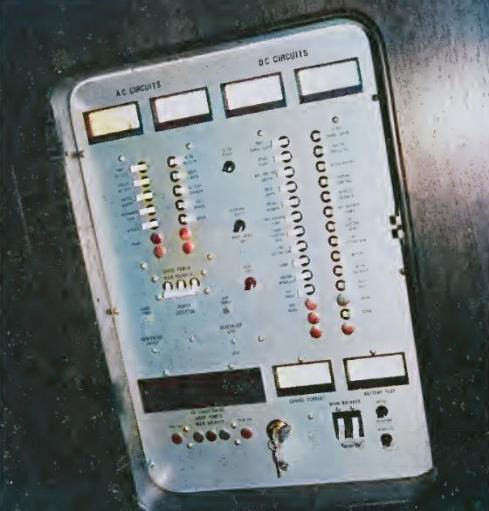
All wiring should be color coded, protected from chafe or excessive vibration, and kept out of damp or wet areas such as the bilge. Electrical equipment and connections should be clean and corrosion-free. To protect against equipment damage or fire, all electrical equipment should be wired into a fuse or circuit breaker panel located in a dry part of the boat. Many builders fail to comprehend that a panel under the companionway sill is NOT in a dry spot.
Two batteries are recommended for boats that require electric starting, one for the engine and one for the lights and accessory equipment. Marine deep-cycle batteries are preferable. A built-in charge indicator (voltmeter) is handy to determine battery condition. Both batteries should be connected to a four-position vapor-proof switch. They should be located close to the engine so there is a short electrical lead to the starting motor, and they should be insulated from the engine’s heat.
Battery boxes must be acid-proof, well vented, and provide security for the batteries in a 360-degree roll-over. They should be clean, corrosion-free, and topped off with distilled water. Check the batteries with a hydrometer if there is any doubt about their condition.
If shore power (110 volts) is wired into the boat, it must be completely separate from the boat’s 12-volt system. Stray 110 voltage can cause electrolysis, damage 12-volt equipment, or give a crew member a fatal shock. All 110-volt systems must be grounded and should incorporate a Ground Fault Interrupter (GFI), which can save your life if you accidentally become an electrical ground.
Through-hull fittings, mast, engine, fuel tank, keel bolts, propeller shaft, chain plates, and the zinc should all be electrically bonded with No. 8 wire to protect against galvanic corrosion and provide a rudimentary lightning ground.
Interior lights should be the minimum size necessary for their function and should be well distributed throughout the boat. Fluorescent lights draw much less current and should be considered for the large lights in the main cabin or for use in the head. They can, however, interfere with radar and electronic navigation equipment. Red night lights and rheostats are worthwhile power and night-vision savers.
Deck lights are useful for deck work after dark. Unfortunately, these lights are exposed to the weather, to vibration fatigue, and to direct breakage from sails, halyards, or radar reflectors. Spreader lights are popular but are more susceptible to damage than mast-mounted lights.
Running lights should be as bright (given power limitations) and visible as possible. Mountings on the bow and stern pulpits are much more visible than hull or deck mountings and are less likely to be damaged by collision with an out-of-control dock. Running lights must be well sealed. All sockets and bulbs on a used boat should be checked for corrosion. Masthead navigation lights provide superior visibility when offshore or navigating near large ships. They can be combined with an emergency strobe and/or anchor light.
After completing your review of the electrical system, consider whether the average daily draw of the boat’s lights, appliances, and gadgets will exceed the capacity of the alternator, the battery, or your personal tolerance for motoring to the extent necessary to keep the electrical system running.
